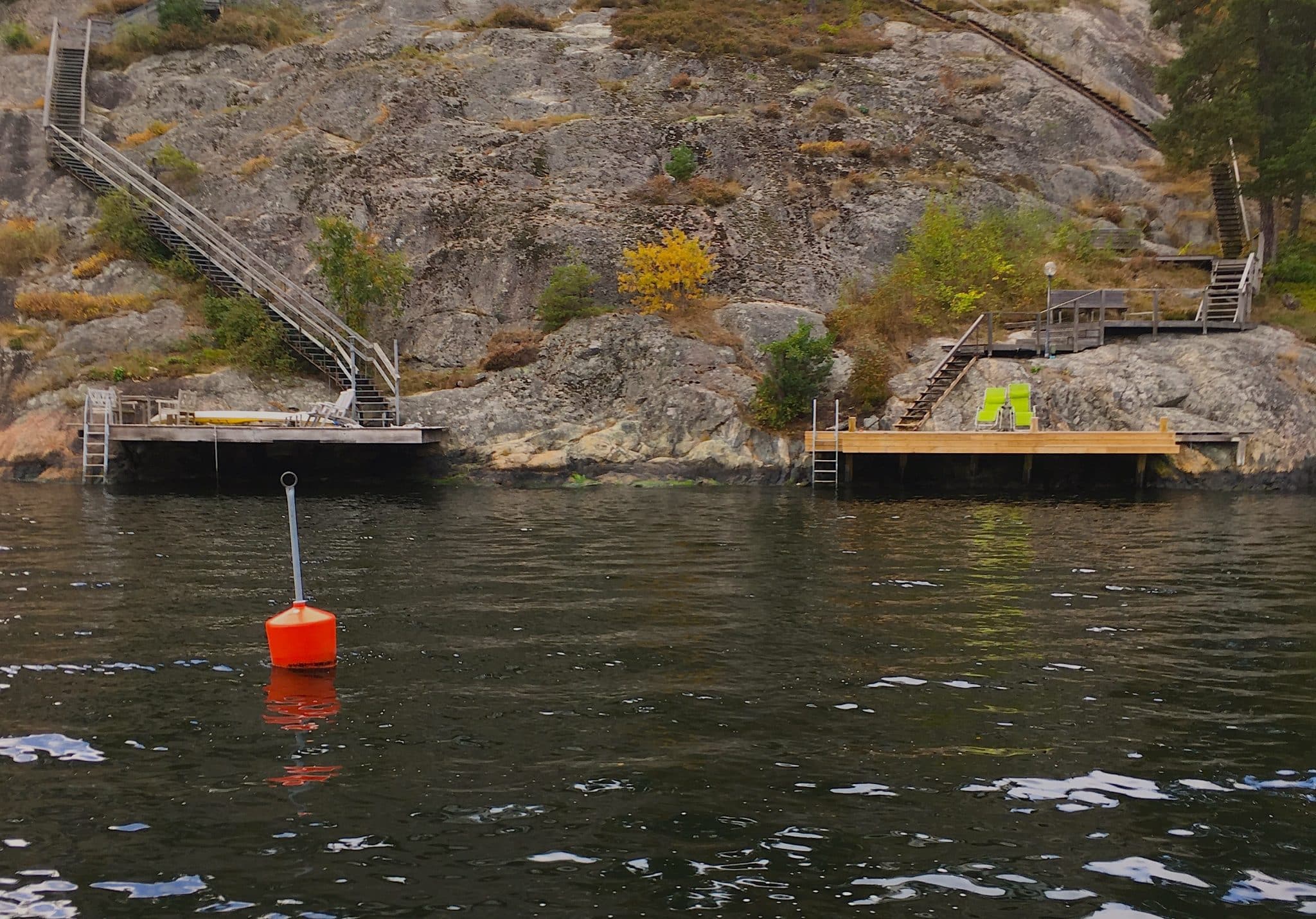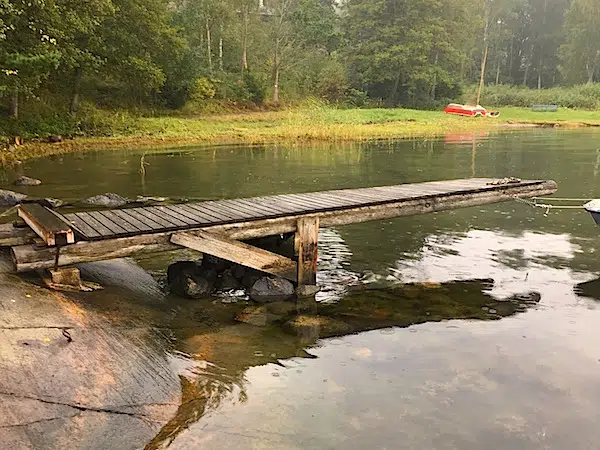
ROCK BRIDGE
A mountain bridge is, as the name describes, stuck in a mountain. Usually it is cast or bolted and hangs out over the water, sometimes in combination with piles into the sediment, or stabilizing cables that lift the bridge up like a suspension bridge, but a pure rock bridge hangs out over the water like a lip anchored only in the rock.
In the conditions where a rock slopes steeply into the water and the depth is sufficient directly outside the water’s edge, it is possible to build a type of rock bridge called a cantilever bridge along the slope of the rock down towards the water.
The cantilever bridge is advantageous in that it is relatively cheap, has a long life, and is relatively free from the influence of sea and ice. A possible disadvantage is that it cannot be extended from the mountain more than a few meters as it quickly becomes unstable. But if the jetty surface is sufficient for the purpose and the rock and water ratio is right, this is a very advantageous jetty in terms of function and price.
If you plan to get a jetty and have mountains that meet the waterline, you should consider this construction given that the water depth is sufficient just outside. However, as I said, there is nothing that says that you cannot combine different designs to suit certain conditions and needs. The rock anchoring is, for example, advantageously combined with piles or chests if the jetty needs to be further out into the water.
Bergbrygga model “simple” below.


